An architect’s view toward “Environment”
The following paper was prepared for the ICMAEE Conference on 5 July 2019.
An architect’s view toward “Environment”, creating “Nature” with Architectural Geometry
Kenji Sato
Department of Architecture, Shizuoka Institute of Science and Technology
Keywords: Architect, Design, Nature, Environment, Geometry
Introduction
Reviewing the past design practices, this paper argues how the artificial environment is created with inspirations from Nature or Natural Environment. Essentially, architects deal with the creation of physical and artificial environment. In this sense, the word “artificial nature” literally contains a contradiction. Therefore, the interaction of architects with nature is indirect and sometimes metaphorical. Architects get design inspirations from nature and transform it into an artificial environment with manipulation of architectural geometries.
Creating Trees and Forest
One example is seen in the design of Shenzhen Cultural Center. It is a cultural complex and its construction is completed in 2007. It has a huge atrium covered by glazed roof and supported by tree-like structures from inside. There the design of artificial Trees and Forest is realized. In fact, this design was a three-dimensional adaptation of the studies related to the urban networks.
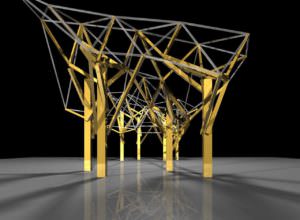
Figure 1. Design Studies of “Golden Trees”, Shenzhen Cultural Center, Arata Isozaki and Associates, 1998-2007, CG image
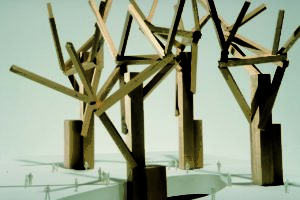
Figure 2. “Golden Trees”, wooden model
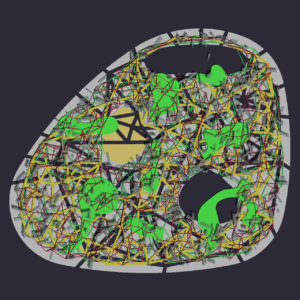
Figure 3. “Haishi Mirrage City – Internet Island”, Arata Isozaki and Associates, 1998
Study of urban networks
Geometry of Territories
Ecology of living creatures gives good reference to architects and urban planners. Voronoi diagram is the mathematical representation of natural colony of sea anemone. The hand drawn sketch by Christopher Alexander illustrates his ideas towards the configuration of a city (Figure 6.). In his view, the city is perceived as a colony of human communities. A similar configuration is observed as in the colony of sea anemone. Those studies are further applicable to the design of urban networks.
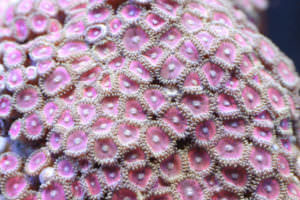
Figure 4. Colony of Sea Anemone

Figure 5. Voronoi diagram, generated from 500 seeds

Figure 6. Sketch by Christopher Alexander
Creating Terra Firma
Another example to create an artificial nature is the design of Terra Firma, or the natural ground. By virtue of computer aided design, architects can manipulate complex geometries like curved surfaces since mid-1990s. Kitagata Community Center is one of the examples of this kind. One single roof with curved surface covered the entire building, which houses a circular theatre and an exhibition space. The similar idea had been tried in the design of National Grand Theatre in Beijing, 1998. A huge complex, comprising an opera theatre, a drama theatre, a concert hall and an experimental theatre, is covered by one single roof with an undulating surface.

Figure 7. Kitagata Community Center, Arata Isozaki and Associates, 2005
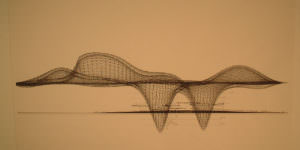
Figure 8. Sectional study for the National Grand Theatre, Beijing, Arata Isozaki and Associates, 1998
Conclusions
Design concepts seen in the projects so far exemplified are all related to the creation of artificial nature. The first example tries to design Trees and Forest in an artificial manner. The second one is to create a man-made Terra Firma. Both designs are originated and inspired by Nature. Though, architects do not literally reproduce nature or natural environment. Instead, nature needs to be reinterpreted in a geometrical manner. In other words, it is a creation of natural environment in an artificial structure. In this design process, geometric manipulation becomes critical since Geometry creates the basis of Architecture.
References
[1] GA Document 101, editor A.D.A. EDITA TOKYO, March 2008, pp.62-83
[2] Christopher Alexander, “A Pattern Language”, 1977, Japanese Translation by Kanna Hirata, 1984, pp.83
Additional pictures for oral presentation:
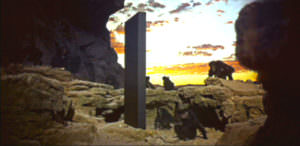
Monolith, from the picture “2001: A Space Odessey”

Le Corbusier “Lesson of Rome”

Shenzhen Cultural Center, Atara Isozaki and Associates, completed in 2007

Shenzhen Cultural Center, competition scheme
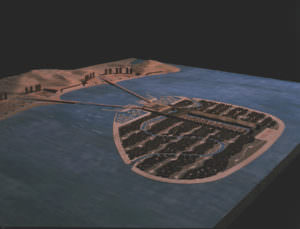
Arata Isozaki and Associates “Haishi Mirage City”

Jackson Pollock #1, 1949

Internet Island, detail
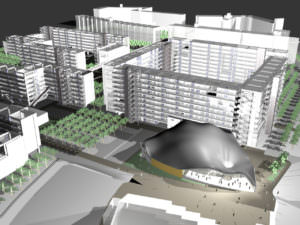
Kitagata Community Center, CG image
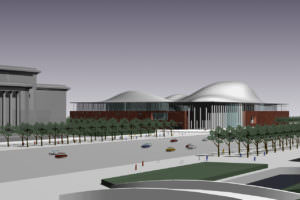
National Grand Theater, Beijing, view from Tien-An Men.
